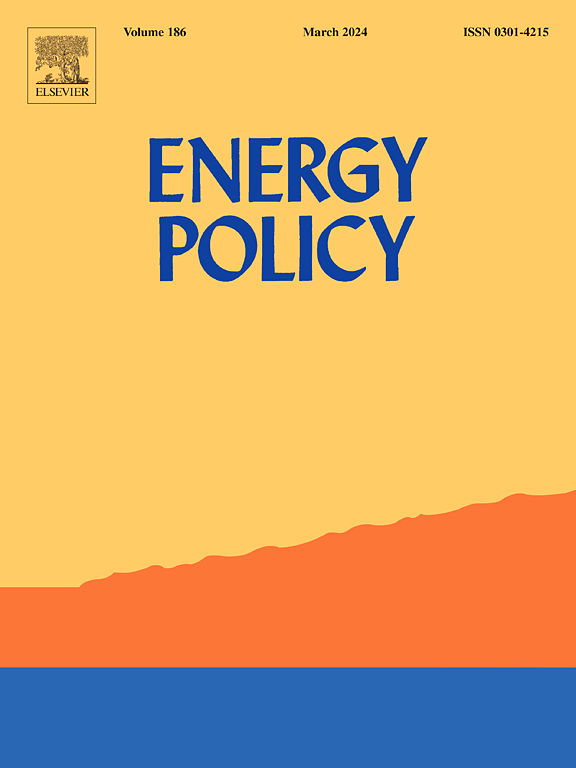Analysing the energy landscape in Africa using cluster analysis: Drivers of renewable energy development
IF 9.3
2区 经济学
Q1 ECONOMICS
引用次数: 0
Abstract
International attention toward energy transition has seen significant growth recently. Each region has focused on some of its aspects according to its own context. Our work focuses on African countries and analyses their energy transition. Our study adds to the literature on energy transition studies by understanding the energy landscape of African countries and identifying similarities and differences between them using a cluster analysis based on a multivariate Euclidean distance measure. Thanks to this measure, we highlighted four clusters. We discuss how these clusters are explained by similar economic, political and cultural factors. The cluster that uses the most RE (Green-Cluster) has low political stability and high foreign direct investment, suggesting that RE can be an opportunity to attract investors and enhance green economic development. Countries of cluster that show high FF consumption (Brown-cluster), have high CO2 emissions but better economic and social situations. Lastly, we proposed diverse policy implications for the different clusters, offering a range of indications aimed at advancing specific Sustainable Development Goals. It is necessary to focus on developing strategies to leverage RE and enhance governance for countries of Green-Cluster. For Brown-cluster, they should accelerate the transition to cleaner energy sources to combat climate change.
利用聚类分析分析非洲的能源状况:可再生能源发展的驱动因素
最近,国际社会对能源转型的关注显著增加。每个地区都根据自己的情况关注其某些方面。我们的工作重点是非洲国家,分析其能源转型情况。我们的研究通过了解非洲国家的能源状况,并利用基于多元欧几里得距离测量的聚类分析确定它们之间的异同,从而为能源转型研究文献增添了新的内容。借助这一方法,我们突出了四个聚类。我们讨论了这些聚类如何通过相似的经济、政治和文化因素来解释。使用可再生能源最多的聚类(绿色聚类)政治稳定性较低,外国直接投资较高,这表明可再生能源可以成为吸引投资者和促进绿色经济发展的契机。可再生能源消费较高的国家集群(棕色集群)的二氧化碳排放量较高,但经济和社会状况较好。最后,我们针对不同集群提出了不同的政策影响,提供了一系列旨在推进特定可持续发展目标的指标。对于绿色集群国家,有必要重点制定利用可再生能源和加强治理的战略。对于棕色组,它们应加快向清洁能源过渡,以应对气候变化。
本文章由计算机程序翻译,如有差异,请以英文原文为准。
求助全文
约1分钟内获得全文
求助全文
来源期刊

Energy Policy
管理科学-环境科学
CiteScore
17.30
自引率
5.60%
发文量
540
审稿时长
7.9 months
期刊介绍:
Energy policy is the manner in which a given entity (often governmental) has decided to address issues of energy development including energy conversion, distribution and use as well as reduction of greenhouse gas emissions in order to contribute to climate change mitigation. The attributes of energy policy may include legislation, international treaties, incentives to investment, guidelines for energy conservation, taxation and other public policy techniques.
Energy policy is closely related to climate change policy because totalled worldwide the energy sector emits more greenhouse gas than other sectors.
 求助内容:
求助内容: 应助结果提醒方式:
应助结果提醒方式:


